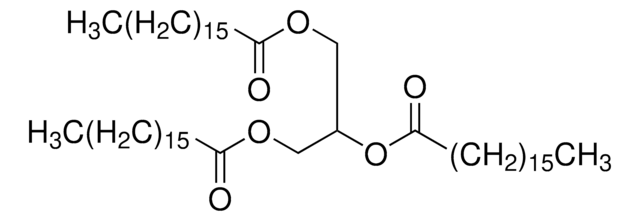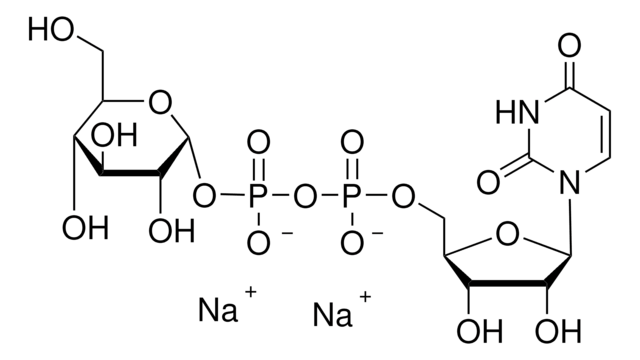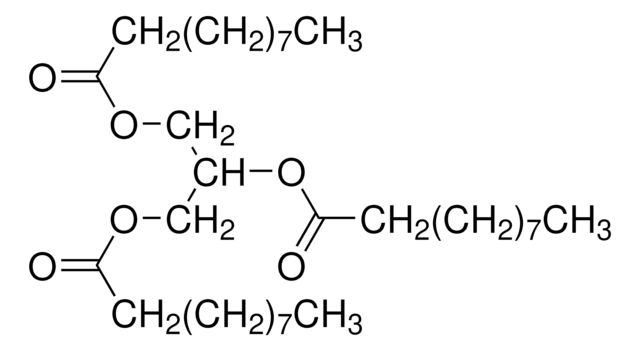Kluczowe dokumenty
T4257
Tripentadecanoin
≥99%
Synonim(y):
TG(15:0/15:0/15:0), 1,2,3-Tripentadecanoylglycerol
About This Item
Polecane produkty
pochodzenie biologiczne
synthetic (organic)
Poziom jakości
Próba
≥99%
Formularz
powder
grupa funkcyjna
ester
typ lipidu
neutral glycerides
Warunki transportu
ambient
temp. przechowywania
−20°C
ciąg SMILES
CCCCCCCCCCCCCCC(=O)OCC(COC(=O)CCCCCCCCCCCCCC)OC(=O)CCCCCCCCCCCCCC
InChI
1S/C48H92O6/c1-4-7-10-13-16-19-22-25-28-31-34-37-40-46(49)52-43-45(54-48(51)42-39-36-33-30-27-24-21-18-15-12-9-6-3)44-53-47(50)41-38-35-32-29-26-23-20-17-14-11-8-5-2/h45H,4-44H2,1-3H3
Klucz InChI
CLJLWABDLPQTHL-UHFFFAOYSA-N
Zastosowanie
- A rare natural lipid induces neuroglobin expression to prevent amyloid oligomers toxicity and retinal neurodegeneration.: This study explores the protective effects of a rare natural lipid, presumably including Tripentadecanoin, on neurodegeneration. It specifically focuses on neuroglobin expression to combat amyloid oligomers′ toxicity in the retina (Oamen et al., 2022).
- Analysis of fatty acid content and composition in microalgae.: This research details methods for analyzing fatty acid content and composition in microalgae, providing insights into how Tripentadecanoin and similar fatty acids are profiled in these organisms (Breuer et al., 2013).
Kod klasy składowania
11 - Combustible Solids
Klasa zagrożenia wodnego (WGK)
WGK 3
Temperatura zapłonu (°F)
Not applicable
Temperatura zapłonu (°C)
Not applicable
Środki ochrony indywidualnej
Eyeshields, Gloves, type N95 (US)
Wybierz jedną z najnowszych wersji:
Masz już ten produkt?
Dokumenty związane z niedawno zakupionymi produktami zostały zamieszczone w Bibliotece dokumentów.
Klienci oglądali również te produkty
Nasz zespół naukowców ma doświadczenie we wszystkich obszarach badań, w tym w naukach przyrodniczych, materiałoznawstwie, syntezie chemicznej, chromatografii, analityce i wielu innych dziedzinach.
Skontaktuj się z zespołem ds. pomocy technicznej














